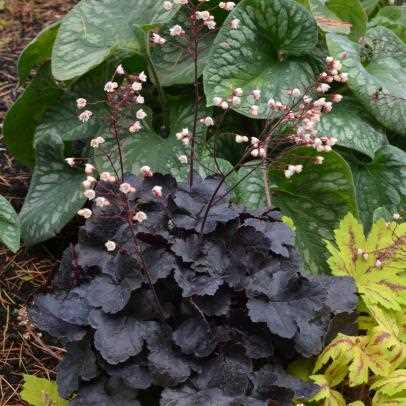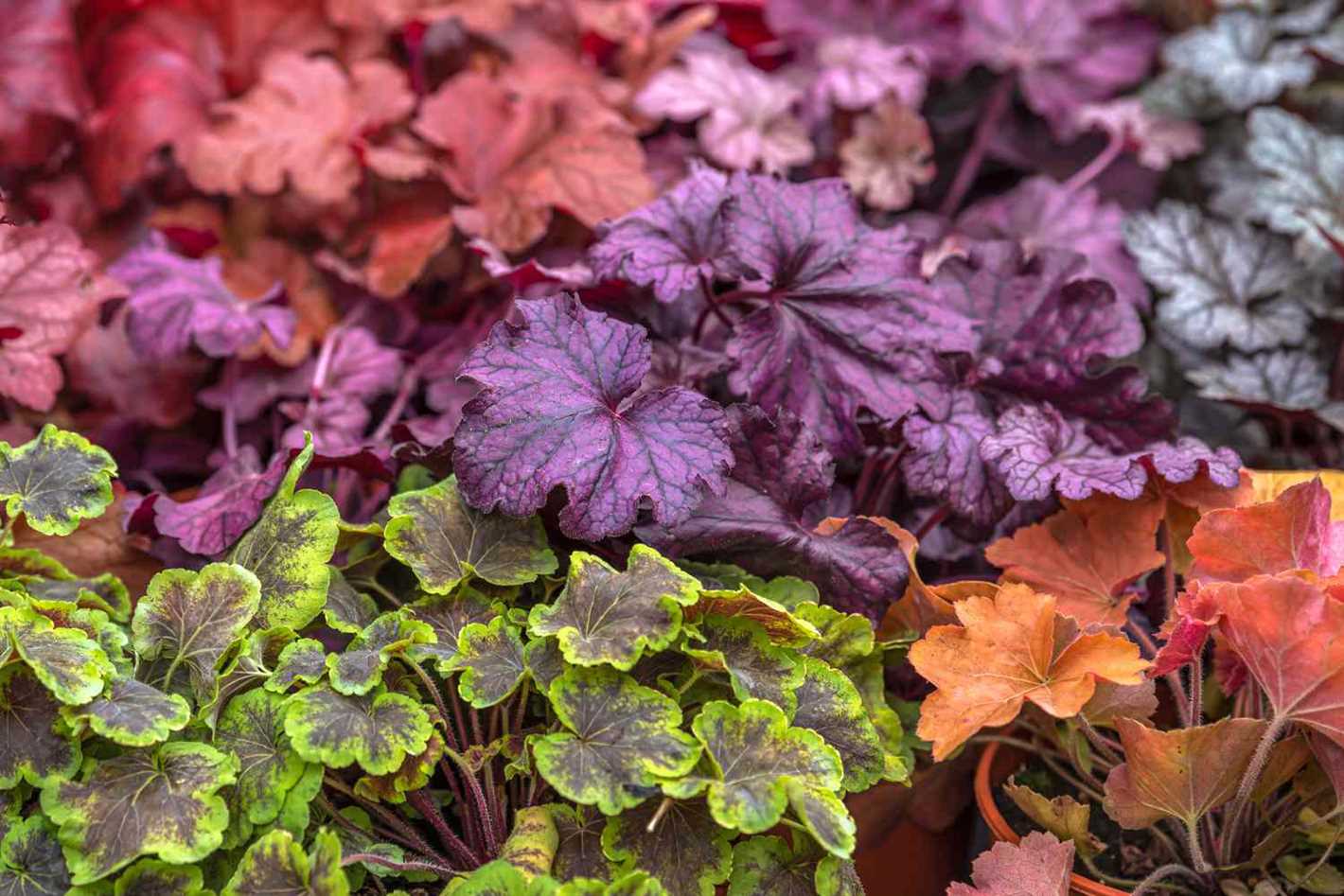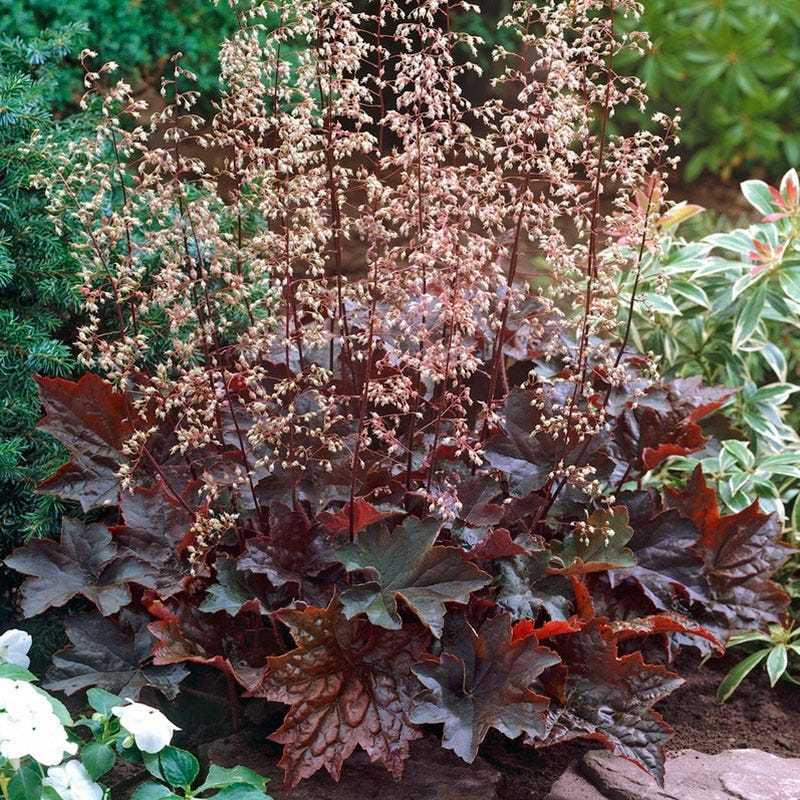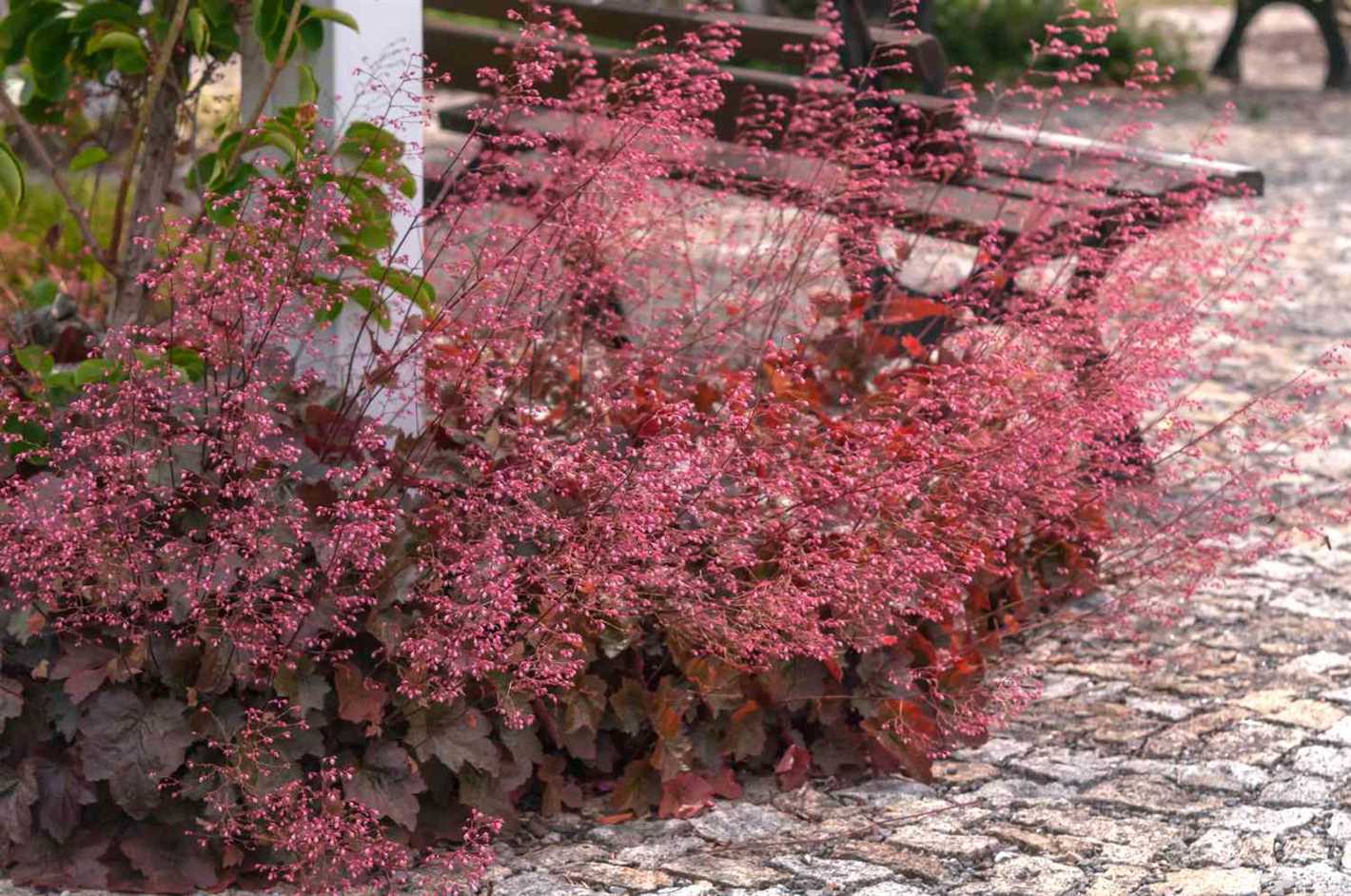- The Importance of Planting and Care
- 1. Planting
- 2. Watering
- 3. Fertilizing
- 4. Pruning
- 5. Protection
- 6. Division and Transplanting
- Choosing the Right Species of Bells
- 1. Campanula carpatica
- 2. Campanula lactiflora
- 3. Campanula persicifolia
- 4. Campanula portenschlagiana
- 5. Campanula rotundifolia
- Bell Varieties for Every Garden
- 1. Foxglove Bells
- 2. Canterbury Bells
- 3. Bellflowers
- 4. Bluebells
- 5. Lily-of-the-Valley
- How to Plant Bells
- 1. Choose the Right Location
- 2. Prepare the Soil
- 3. Planting Bells
- 4. Watering
- 5. Mulching
- 6. Support and Staking
- 7. Fertilizing
- 8. Regular Maintenance
- 9. Pest and Disease Control
- 10. Division and Propagation
- Essential Care Tips for Bells
- 1. Location
- 2. Soil
- 3. Watering
- 4. Fertilizer
- 5. Pruning
- 6. Mulching
- 7. Pests and Diseases
- Common Problems and Solutions for Bells
- Pest Infestation
- Root Rot
- Leaf Spot Disease
- Yellowing Leaves
- Poor Flowering
- Wilting
- Deer and Rabbit Damage
- Questions and Answers:
- What are some popular species of bells?
- How do I plant bells?
- Do bells require any special care?
- What are some popular bell varieties for containers?
- Can bells be grown indoors?
- Videos: 15 Perennials Every Garden Should Have! // Garden Answer
Bells, also known as Campanula, are a beautiful addition to any garden. With their delicate bell-shaped flowers and vibrant colors, they are sure to add a touch of elegance to your outdoor space. Whether you are a seasoned gardener or just starting out, this complete guide will provide you with all the information you need to successfully plant and care for bells.
When it comes to planting bells, the most important thing to consider is the location. Bells thrive in full sun or partial shade, so choose a spot in your garden that receives at least 6 hours of sunlight each day. The soil should be well-draining, as bells do not tolerate wet feet. If your soil is heavy clay, consider adding organic matter, such as compost or peat moss, to improve drainage.
Once you have found the perfect spot, it’s time to prepare the soil. Dig a hole that is twice as wide and just as deep as the root ball of your bell plant. Place the plant in the hole, making sure that the top of the root ball is level with the ground. Backfill the hole with soil, gently firming it down around the plant. Water thoroughly to help settle the soil and remove any air pockets.
Caring for bells is relatively easy, as these plants are low-maintenance. Water regularly, especially during dry spells, but be careful not to overwater. Bells prefer to be kept on the drier side, so allow the top inch of soil to dry out between waterings. Fertilize once a month during the growing season with a balanced, slow-release fertilizer. Deadhead spent flowers to encourage continuous blooming and remove any diseased or damaged foliage as necessary.
Bells come in a wide variety of species, each with its own unique characteristics. Some popular species include Campanula carpatica, which produces masses of small blue or white flowers, and Campanula lactiflora, which has tall spikes of bell-shaped purple flowers. There are also many hybrid varieties available, offering a range of colors and sizes to suit any garden style.
Bells are a versatile and beautiful addition to any garden. With a little care and attention, you can enjoy their stunning blooms year after year. So why wait? Start planting bells today and reap the rewards of their beauty.
The Importance of Planting and Care
The planting and care of bells is crucial for ensuring healthy growth and vibrant blooms. Proper planting techniques, maintenance, and attention to the specific needs of each species and variety are essential for achieving the best results.
1. Planting

When planting bells, it is important to choose a location that receives adequate sunlight and has well-draining soil. Bells thrive in full sun to partial shade, depending on the species. Prepare the planting area by removing any weeds or grass and loosening the soil.
Dig a hole that is deep enough to accommodate the root ball of the plant. Place the plant in the hole, making sure the top of the root ball is level with the ground. Backfill the hole with soil, firming it gently around the roots.
2. Watering
Watering is crucial during the establishment period of bells. After planting, water the plants thoroughly, ensuring that the soil is evenly moist. Once established, bells generally require moderate watering. Be careful not to overwater, as this can lead to root rot.
3. Fertilizing
Fertilizing bells can help promote healthy growth and abundant blooms. Use a balanced fertilizer in early spring or late winter, following the package instructions for application rates. Avoid over-fertilization, as this can cause excessive foliage growth at the expense of flower production.
4. Pruning
Pruning bells is essential for maintaining their shape, removing dead or damaged branches, and promoting new growth. Prune them in early spring or after they finish blooming. Trim back any long, unruly branches to encourage a more compact form.
Some bells may require more extensive pruning, such as removing old woody stems or cutting back to the ground to rejuvenate the plant. Research the specific pruning requirements of your bell variety to ensure proper care.
5. Protection
Protecting bells from pests and diseases is an important part of their care. Monitor the plants regularly for any signs of damage, such as holes in the leaves or discoloration. Use appropriate insecticides or fungicides if necessary, following the manufacturer’s instructions.
Providing adequate support, such as stakes or trellises, is also important for certain bell varieties that have vining or trailing growth habits.
6. Division and Transplanting
Dividing and transplanting bells can help rejuvenate old or overcrowded plants. This is typically done in early spring or fall when the plants are dormant. Carefully dig up the plant, divide it into smaller sections, and replant them in prepared holes.
When transplanting bells, make sure to dig a hole large enough to accommodate the entire root system and transplant it without disturbing the roots. Water the transplanted bell thoroughly after planting to help it establish in its new location.
By following these planting and care practices, you can enjoy the beauty of bells in your garden year after year. Remember to research the specific requirements of your bell species and variety for the best results.
Choosing the Right Species of Bells
When it comes to choosing the right species of bells for your garden, there are several factors to consider. Different species have different growth habits, flower colors, and care requirements. Here are some popular species of bells to consider:
1. Campanula carpatica
Campanula carpatica, also known as Carpathian harebell, is a popular choice for gardens due to its compact size and beautiful blue or white bell-shaped flowers. It is an ideal species for rock gardens or border plantings.
2. Campanula lactiflora
Campanula lactiflora, commonly known as milky bellflower, is a tall species that can reach up to 3 feet in height. It has nodding bell-shaped flowers in shades of white, pink, or blue. This species is perfect for creating vertical interest in a garden.
3. Campanula persicifolia
Campanula persicifolia, or peach-leaved bellflower, is a clump-forming species with tall spikes of bell-shaped flowers. It comes in various colors, including white, blue, and pink. This species is often used in cottage gardens or mixed borders.
4. Campanula portenschlagiana
Campanula portenschlagiana, also known as Dalmatian bellflower, is a low-growing species that forms a dense carpet of bell-shaped flowers. It is perfect for ground cover or as a trailing plant in containers.
5. Campanula rotundifolia
Campanula rotundifolia, commonly called harebell or bluebell, is a delicate species with graceful, bell-shaped blue flowers. It is a great choice for naturalistic or wildflower gardens.
Remember to consider the growing conditions of your garden, such as sun exposure and soil type, as different species have different preferences. By selecting the right species of bells for your garden, you can create a beautiful and thriving display of flowers.
Bell Varieties for Every Garden
Bells are a popular choice for gardeners due to their vibrant colors and sweet fragrance. Whether you have a small urban garden or a sprawling country estate, there is a bell variety that is perfect for your space. Here are some of the top bell varieties for every garden:
1. Foxglove Bells
Foxglove Bells, also known as Digitalis purpurea, are tall plants with long, tubular flowers that come in a range of colors, including pink, purple, white, and yellow. They are a favorite among cottage gardeners and add a touch of whimsy to any space.
2. Canterbury Bells
Canterbury Bells, or Campanula medium, are biennial plants that produce bell-shaped flowers in shades of blue, pink, and white. They are ideal for adding a splash of color to borders or rock gardens.
3. Bellflowers
Bellflowers, or Campanula, come in a variety of species and cultivars, ranging from dwarf plants to tall, spreading varieties. They produce bell-shaped flowers in shades of blue, purple, pink, and white. Bellflowers are easy to grow and make a charming addition to any garden.
4. Bluebells
Bluebells, or Hyacinthoides non-scripta, are native to woodlands and produce delicate, bell-shaped flowers in shades of blue. They thrive in shady areas and are perfect for creating a tranquil, natural atmosphere in your garden.
5. Lily-of-the-Valley
Lily-of-the-Valley, or Convallaria majalis, are small, low-growing plants that produce fragrant, bell-shaped flowers in white or pink. They are perfect for adding a touch of elegance to shady areas or for planting in containers.
These are just a few of the many bell varieties available for your garden. Whether you prefer tall, dramatic plants or low-growing ground covers, there is a bell variety to suit your taste. So go ahead and plant some bells in your garden and enjoy the beauty and fragrance they bring!
How to Plant Bells
1. Choose the Right Location
Before planting bells, you need to choose the right location for them. Bells prefer a well-draining soil that is rich in organic matter. They also thrive in areas with full sun or partial shade.
2. Prepare the Soil
Prepare the soil by removing any weeds or grass from the planting area. Loosen the soil to a depth of 6-8 inches and mix in compost or well-rotted manure to improve the soil’s fertility and drainage.
3. Planting Bells
When planting bells, dig a hole that is deep enough to accommodate the roots comfortably. Place the plant in the hole and backfill it with soil, firming it gently around the roots. Make sure the crown of the bell is level with the soil surface.
4. Watering
After planting, water the bells thoroughly to settle the soil around the roots. Keep the soil consistently moist but not waterlogged. Water deeply once a week, especially during dry periods.
5. Mulching
Apply a layer of organic mulch around the bells to help retain moisture and suppress weed growth. Keep the mulch a few inches away from the plant’s stem to prevent rot.
6. Support and Staking
If you are planting tall bell varieties, such as campanulas, it is advisable to provide support or stake the plants to prevent them from flopping over. Use stakes or tomato cages and tie the stems gently to them.
7. Fertilizing
Fertilize bells annually in the spring with a balanced, slow-release fertilizer. Follow the manufacturer’s instructions for application rates.
8. Regular Maintenance
Regularly remove faded flowers to encourage continuous blooming and prevent the plant from seeding everywhere. Cut back the foliage after it dies back in the fall to promote better growth and prevent diseases.
9. Pest and Disease Control
Monitor the bells for pests such as slugs, snails, and aphids. Use organic insecticides or handpick them to control infestations. Watch for diseases like powdery mildew and rust and treat them promptly with appropriate fungicides.
10. Division and Propagation
Every few years, divide overcrowded bell plants in the spring or fall to rejuvenate them. Carefully dig up the clump and separate the individual plants, ensuring each division has sufficient roots and foliage.
By following these steps, you can successfully plant and grow beautiful bells in your garden.
Essential Care Tips for Bells
Growing bells, also known as campanulas, can be a rewarding addition to any garden. With their vibrant flowers and easy care requirements, these plants are a favorite among many gardeners. To ensure the success of your bells, here are some essential care tips to keep in mind:
1. Location
Bells prefer a sunny or partly shaded location. However, some varieties can tolerate full shade. Choose a spot in your garden that receives at least 4-6 hours of direct sunlight per day for optimal growth.
2. Soil
Bells thrive in well-draining soil. Before planting, make sure to amend heavy clay or sandy soil with organic matter to improve its drainage capabilities. A neutral to slightly acidic pH level between 6.0 and 7.0 is ideal for these plants.
3. Watering
Consistent watering is crucial for bell plants, especially during dry periods. Provide enough water to keep the soil evenly moist, but not waterlogged. It’s best to water at the base of the plant to avoid wetting the leaves, which can lead to fungal diseases.
4. Fertilizer
Campanulas are moderate feeders and benefit from a balanced fertilizer applied in early spring. A slow-release or organic fertilizer can provide nutrients throughout the growing season. Be careful not to over-fertilize, as this can lead to excessive foliage growth at the expense of flowering.
5. Pruning

Regular deadheading and pruning of spent flowers can encourage continuous blooming and help maintain the plant’s shape. Cut back the stems to a pair of healthy leaves or the base of the plant after the flowering period. This stimulates new growth and prevents self-seeding.
6. Mulching
Applying a layer of mulch around the base of the bells can help retain moisture, suppress weed growth, and insulate the roots during cold winters. Use organic mulch, such as bark chips or compost, and avoid placing it directly against the stems to prevent moisture-related issues.
7. Pests and Diseases
Bells are generally resistant to pests and diseases. However, snails and slugs may occasionally feed on their foliage. Use organic pest control methods or physical barriers to protect your plants if necessary. Providing good air circulation and avoiding overwatering can also prevent fungal diseases like powdery mildew.
By following these essential care tips, you can enjoy the beauty of bells in your garden for many years to come. Remember to observe your plants regularly and make adjustments to their care routine as needed. Happy gardening!
Common Problems and Solutions for Bells
Pest Infestation
Problem: Bells are susceptible to pest infestation, including aphids, snails, and slugs.
Solution: To control aphids, spray a solution of soap and water on affected plants. This will suffocate and kill the aphids. For snails and slugs, set up traps around your bell plants to catch and remove them.
Root Rot

Problem: Bell plants may suffer from root rot when overwatered or when planted in poorly draining soil.
Solution: Ensure that your planting site has proper drainage to prevent waterlogging. Water the plants sparingly, allowing the soil to dry out slightly between watering sessions. Additionally, avoid planting bells in areas with compacted soil that can impede drainage.
Leaf Spot Disease
Problem: Bells can develop leaf spot disease, which is characterized by the appearance of dark spots on the leaves.
Solution: To prevent leaf spot disease, avoid overhead watering as it can promote the spread of fungal spores. Remove and destroy infected leaves to prevent further spreading of the disease. In severe cases, a fungicide may be necessary, so consult with a professional for appropriate treatment options.
Yellowing Leaves

Problem: Yellowing leaves can indicate nutrient deficiencies or overwatering.
Solution: Check the soil for proper moisture levels and adjust watering accordingly. If overwatering is the issue, reduce the frequency of watering. Test the soil nutrient levels and apply a balanced fertilizer if deficiencies are found. Follow the instructions on the fertilizer package for proper application rates.
Poor Flowering
Problem: Bells may fail to produce abundant flowers.
Solution: Provide ample sunlight to your bell plants, as insufficient light can hinder flowering. Additionally, ensure that your plants are receiving adequate water and nutrients. Prune back any dead or crowded branches to encourage new growth and flowering.
Wilting
Problem: Wilting can occur due to underwatering or high temperatures.
Solution: Check the soil moisture levels and water as needed. Make sure the water reaches the roots by watering deeply. Provide shade or move the plants to a cooler location during hot periods to protect them from wilting.
Deer and Rabbit Damage
Problem: Deer and rabbits can cause damage to bell plants by feeding on leaves and flowers.
Solution: Protect your bell plants by installing fencing around the garden or using repellents designed for deer and rabbits. Additionally, consider planting other deer and rabbit-resistant perennials or shrubs to divert their attention.
Questions and Answers:
What are some popular species of bells?
Some popular species of bells include Campanula carpatica, Campanula rotundifolia, and Campanula lactiflora.
How do I plant bells?
To plant bells, choose a location with well-drained soil and full sun or partial shade. Dig a hole twice as wide as the root ball, place the plant in the hole, and backfill with soil. Water thoroughly after planting and keep the soil moist but not waterlogged.
Do bells require any special care?
Bells require regular watering, especially during dry periods. Deadheading can help promote more blooms, and dividing the plants every few years can help maintain their vigor. Some species may benefit from staking to prevent them from flopping.
What are some popular bell varieties for containers?
Some popular bell varieties for containers include Campanula persicifolia ‘Alba’, Campanula portenschlagiana, and Campanula glomerata ‘Superba’.
Can bells be grown indoors?
Yes, bells can be grown indoors as long as they receive sufficient sunlight. Choose a well-drained potting mix, place the plant near a sunny window, and water regularly to keep the soil evenly moist.







